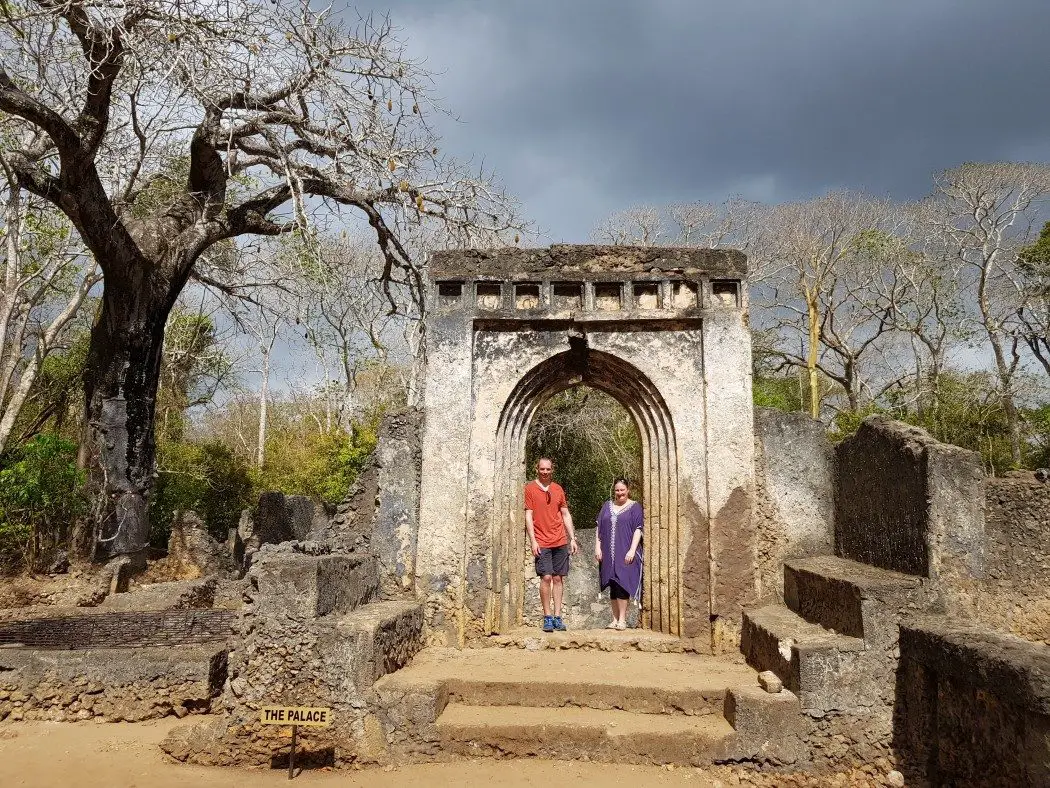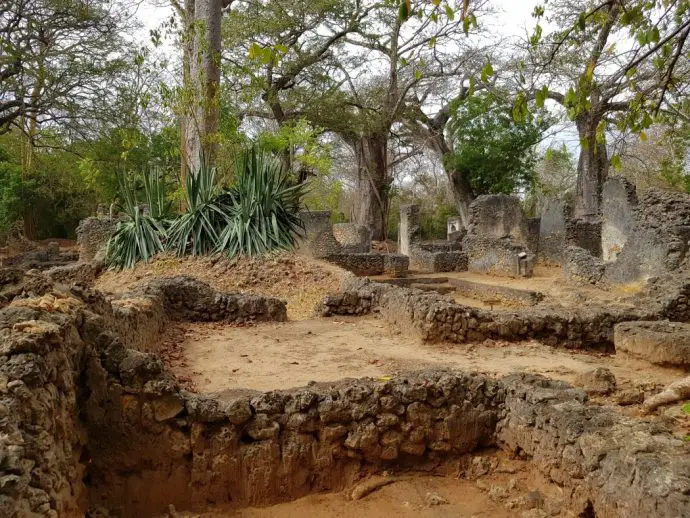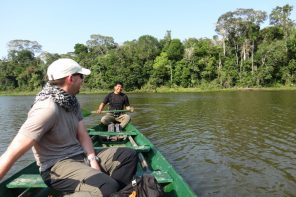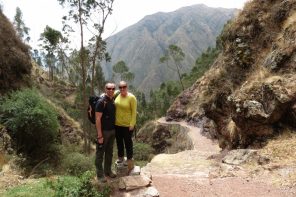Gede isn’t somewhere many people know about, yet this fascinating 600 year old archaeological site on the coast out near Malindi and Watamu deserves to feature on many more Kenya holiday itineraries than it does at present. The ruins at Gede are hidden away in indigenous forest just 10 minutes inland from the coast, and reminded us a little of Angkor Wat, albeit on a smaller scale and without the crowds. We absolutely loved it!
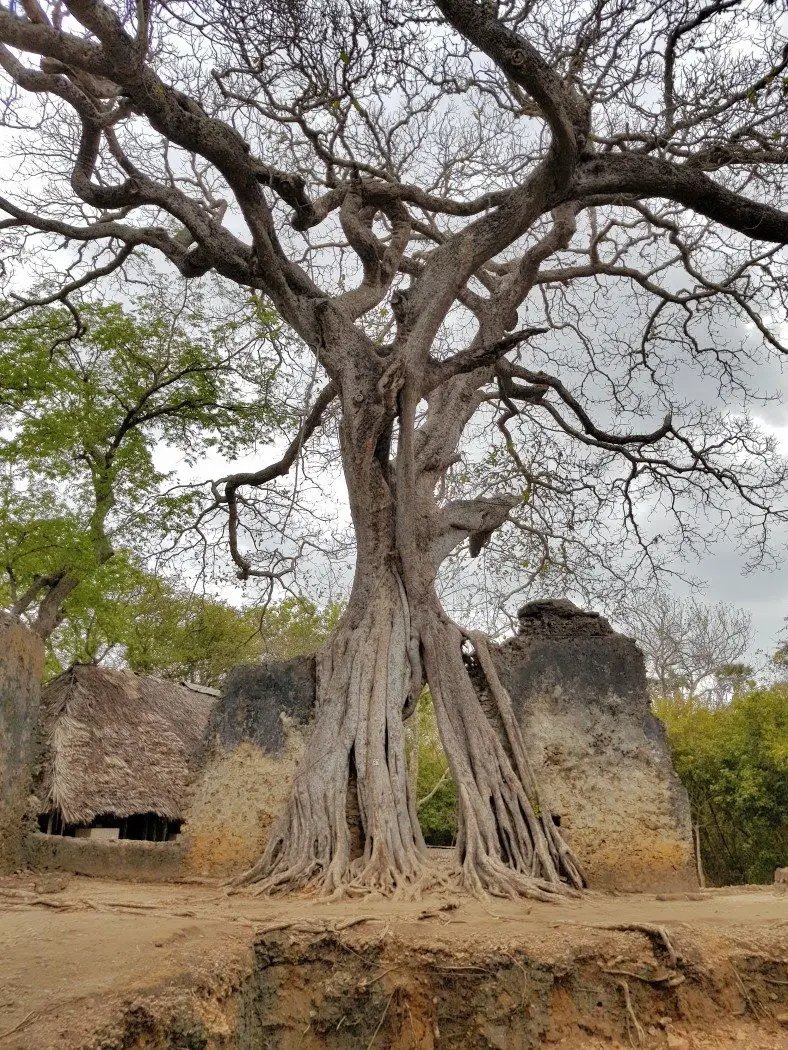
In 1927 Gede was given Historical Monument status, and two years later was declared a ‘protected monument’. By the late 1930’s work had begun on preserving the crumbling walls, and in 1948 it was declared a National Park. Despite this, few people visit as many are here for a slice of beach life after their Kenya safari, and don’t really think about heading inland. But we recommend you take a couple of hours out of your day to visit Gede if you’re in the area. You won’t be disappointed.
Read More: A luxury Kenya Safari – Beach Holiday
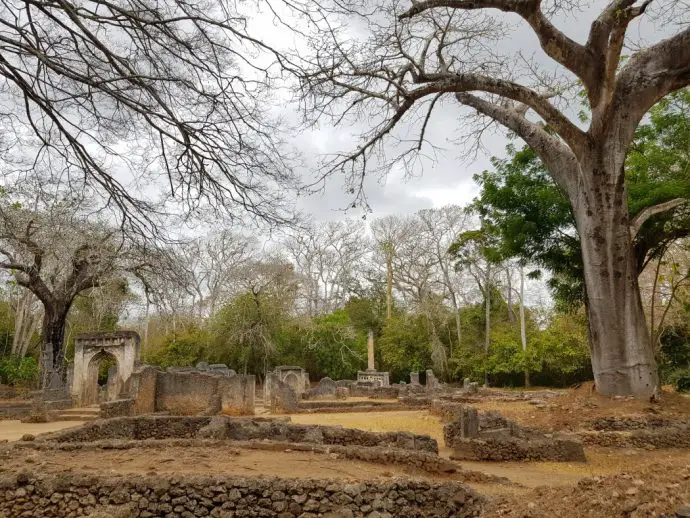
History of Gede
Gede was a 12th Century Swahili village, constructed from stone and coral, with a layout typical of most towns along the East African coast. Covering about 45 acres, the origins of Gede can be traced back to the 12th Century, with some of the walls being rebuilt during the 15th and 16th Centuries.
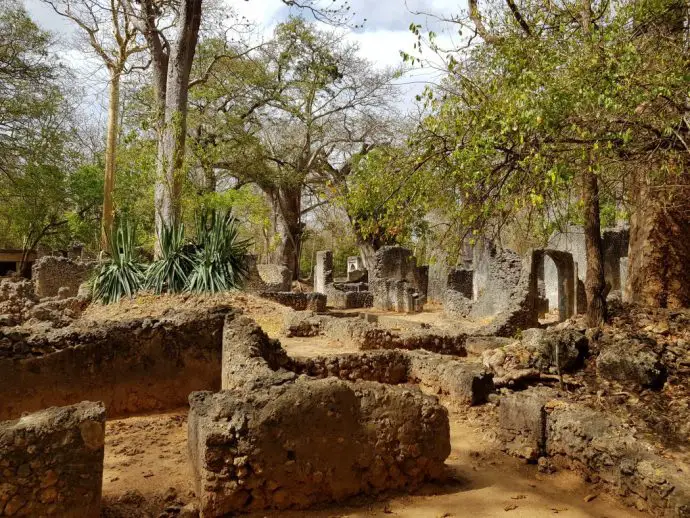
Gede was inhabited by a Muslim community, and during its most prosperous period around 2500 people lived here. The town had two walls. Within the inner wall lived the rich whilst the outer wall surrounded the town, enclosing some 18 hectares of farmland and plantations as well as the houses for the middle class. The poor lived beyond the outer walls.
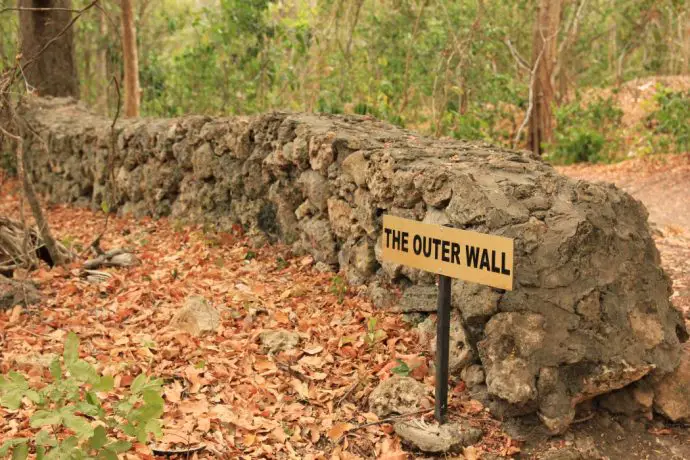
Approximately 18 hectares of Gede have been excavated, revealing the remains of a palace, mosques, pillar tombs and houses. Although Gede is a ruin, the foundations and partial walls of many of the buildings remain in place, so it’s quite easy to conjure up a picture of how the town will have looked all those years ago.
Here’s the palace…
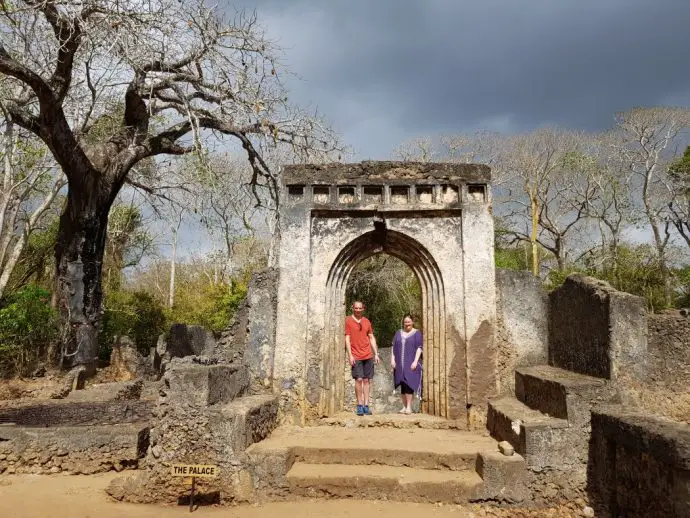
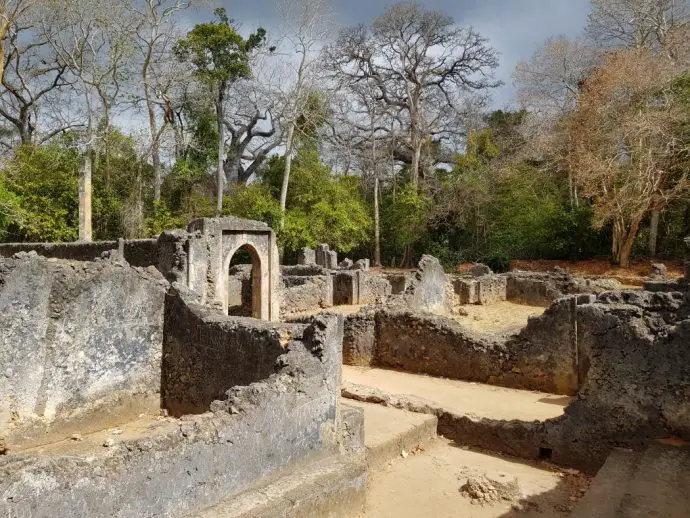
Inside the palace you can still see the men’s and women’s court rooms, a luxurious bath house, and a treasure room which would have concealed the most important items of wealth belonging to the royal family.
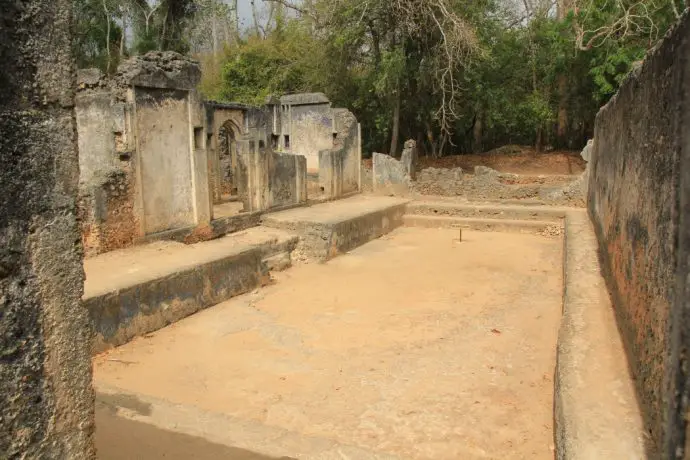
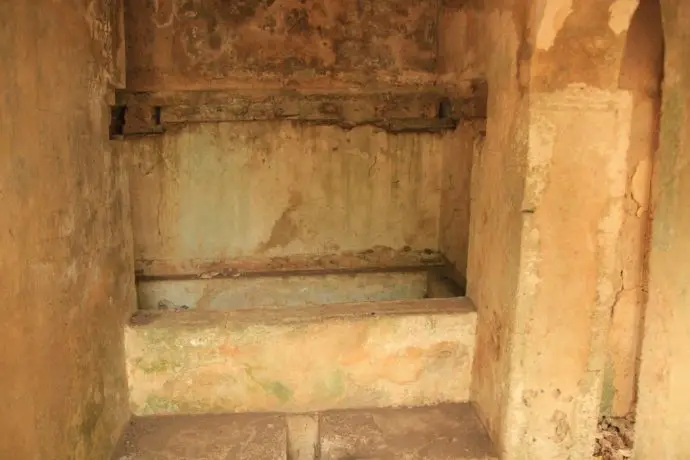
There are several wells dotted around the site, with a particularly large one outside the Great Mosque which was used only for sacred water rather than drinking.
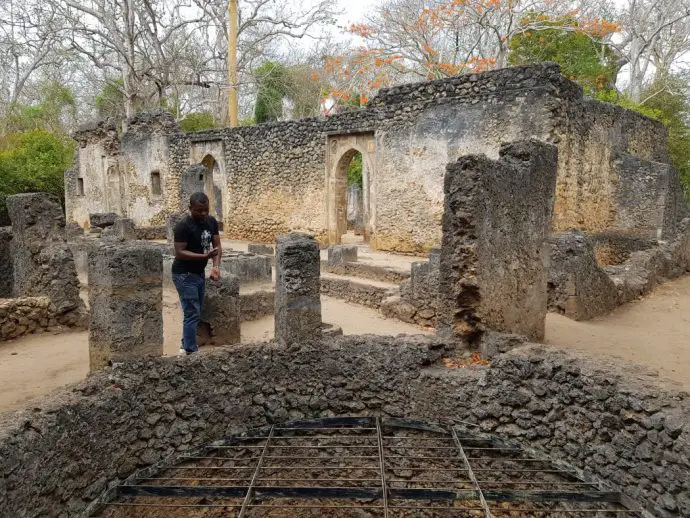
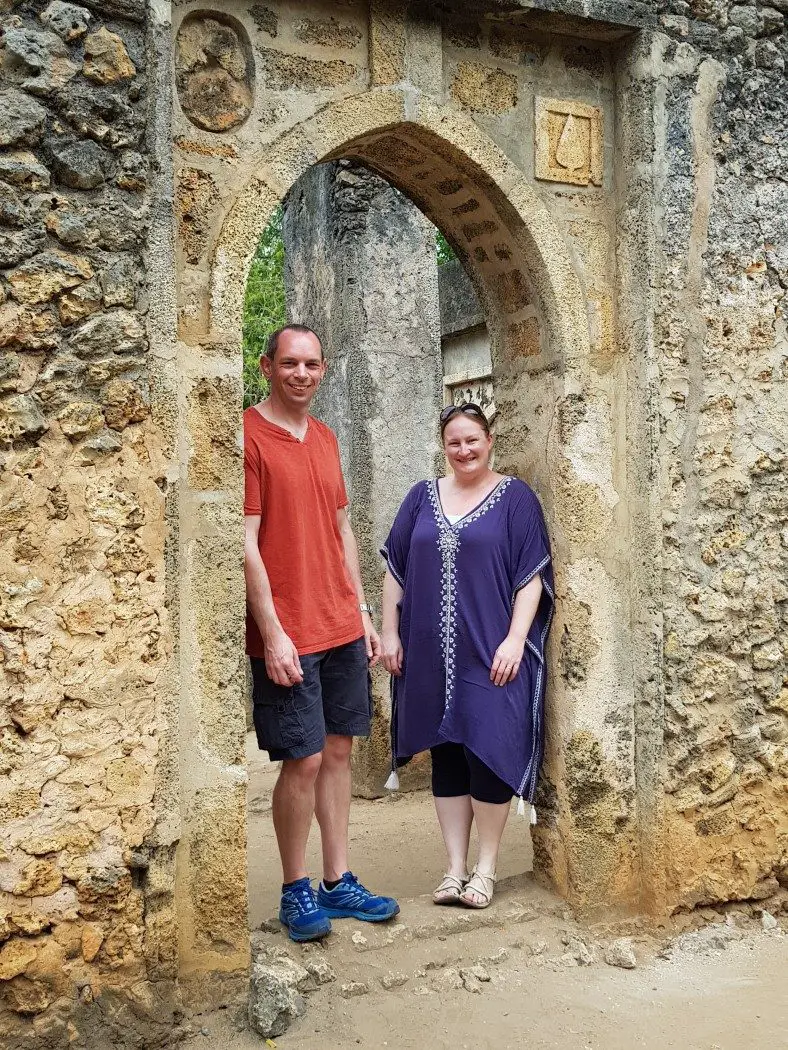
Inside the mosque you’ll notice the small wall enclave at the front which was used for preaching as the chamber amplifies sound out to all sections of the building. We saw this exact same thing when we visited Tin Mal Mosque in Morocco.
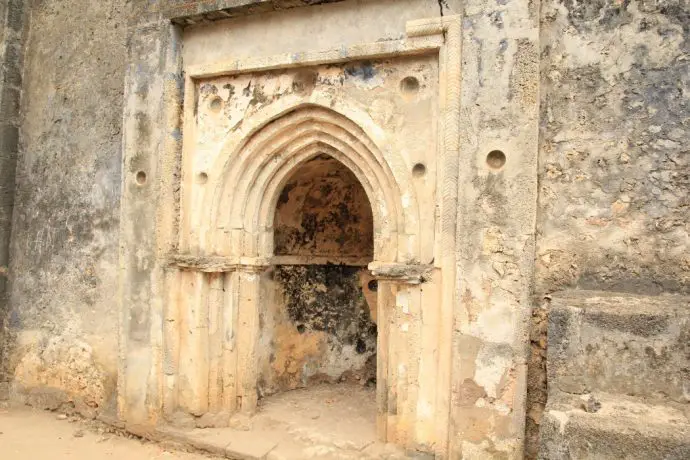
There were a couple of pillar tombs too, presumably belonging to the rich and important, and maybe royalty itself. So much is still unknown about Gede.
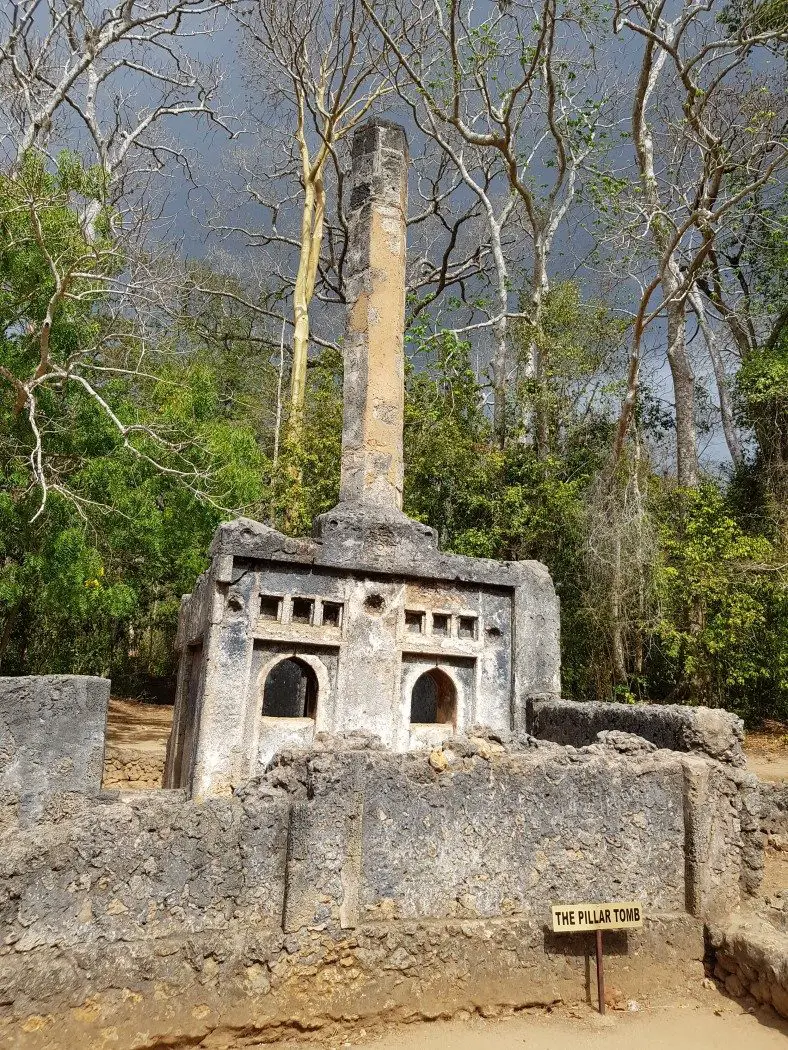
There is one dated tomb, upon which the original script can still be seen, carved into the paler stone on the right. It is this which has helped to date the site!
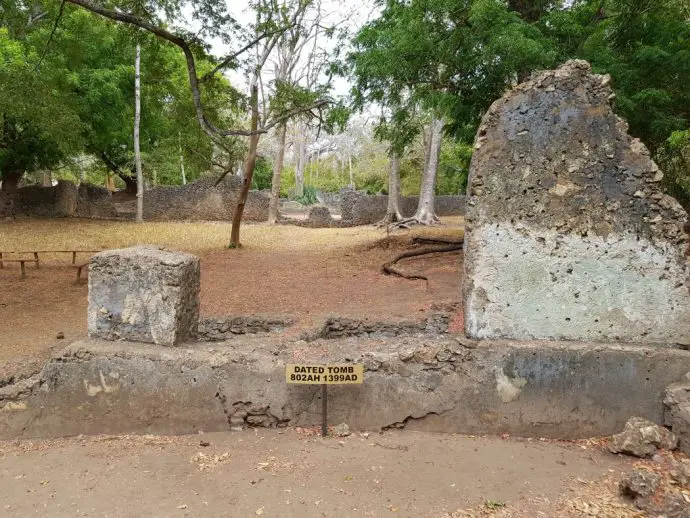
Why was Gede Abandoned?
This has been a mystery for several centuries, but there are a few theories. These include a falling water table (evidenced by the deepening of the Great Mosque well) which would have meant life may have become unsustainable; and various threats from hostile invaders such as the Galla ethnic group from Somalia, and the Wazimba raids in 1589 along the East African Coast.
Whilst no-one really knows why Gede was abandoned in the first half of the 17th Century, the inhabitants clearly didn’t leave in a hurry since they took with them their wealth and belongings. A few items were left behind however, and today some rooms are named after objects found within them, such as the ‘House of the Venetian Bead’, ‘House of the Iron Lamp’ and ‘House of Scissors’.
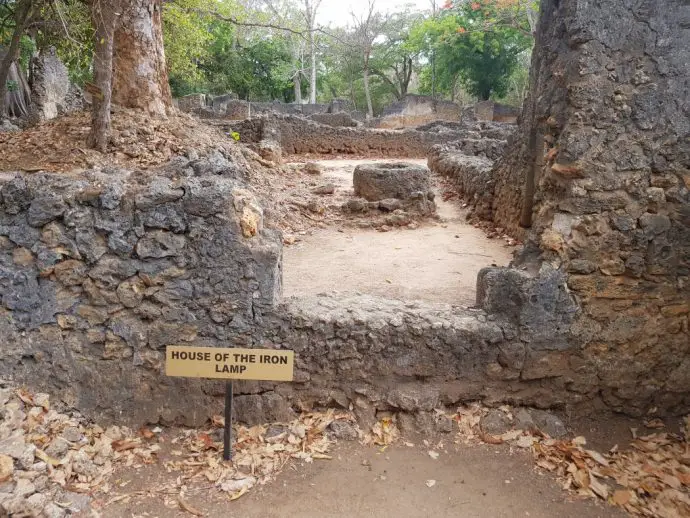
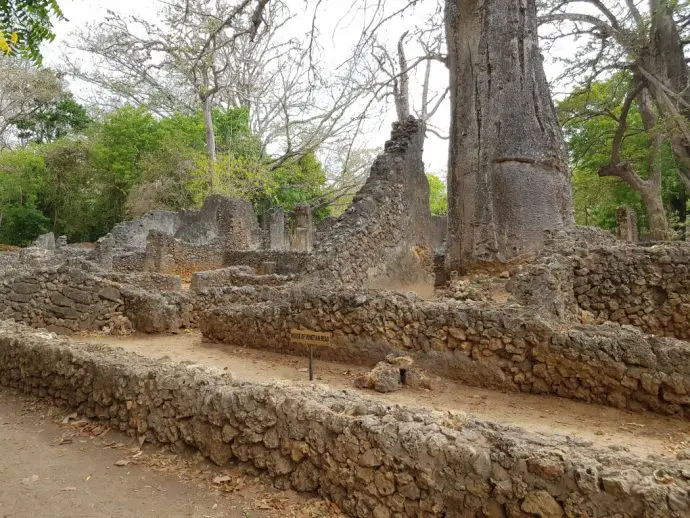
Nature at Gede
Whilst the ruins of Gede are an important archaeological site, the surrounding indigenous forest is equally interesting. A sacred place for traditional rituals and sacrifices for the surrounding villages, it’s also rich in ecological diversity. Just wandering around the ruins you can’t fail to miss the numerous fig trees, giant baobabs, tamarind, and the strange silver-yellow trees that have bark so smooth that even the local Syke’s Monkeys can’t climb up.
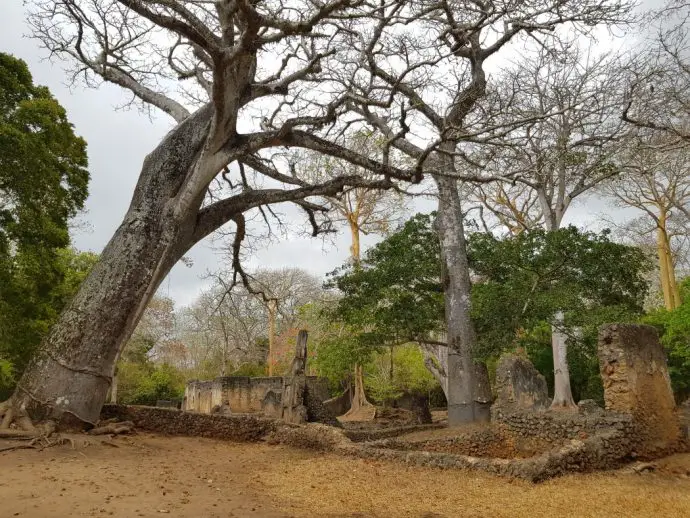
Keep your eyes out for bush buck and owls too, and if you’re really lucky, the Golden Rumped Elephant Shrew! There are enchanting desert roses growing here too, but be careful, the sap is poisonous and used for hunting.
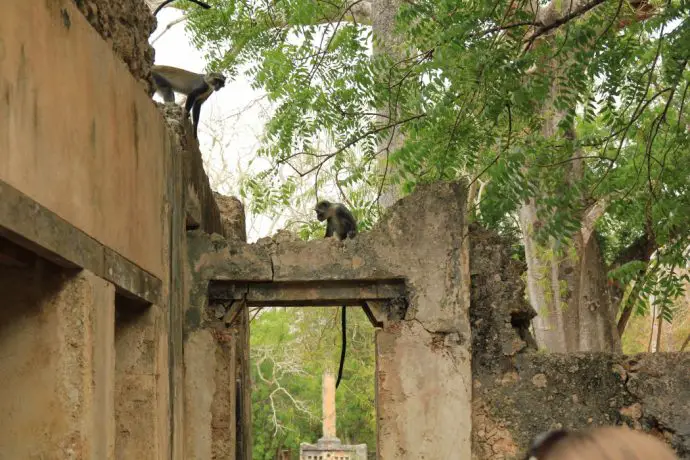
The strange Pavilion
Rather bizarrely, on the edge of the site hidden away in the forest is a large abandoned white pavilion. Apparently it was built by the government as a National Museum and to host dinners and events, but was little used and eventually fell into disrepair. With no funding available to restore it, the pavilion remains abandoned, except for a few rooms which house a small museum. It’s rather eerie!
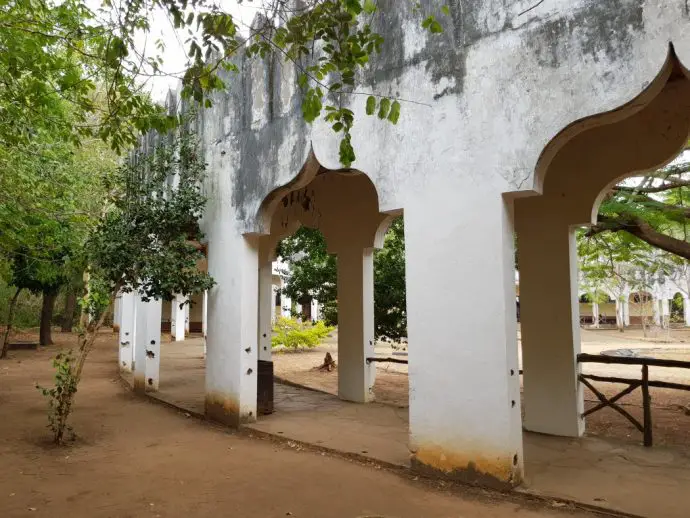
Gede Museum
Inside one of the pavilion rooms a small collection of objects found around Gede give a tangible insight into Swahili culture, including a lamp, coins and several pots. There are always pots at archaeological sites. In the adjoining exhibition room there’s a humpback whale skeleton! Rather incongruous in this setting, but fascinating nonetheless, and a favourite amongst the school children who often come on educational visits. Apparently it was found washed up on the coast some while back.
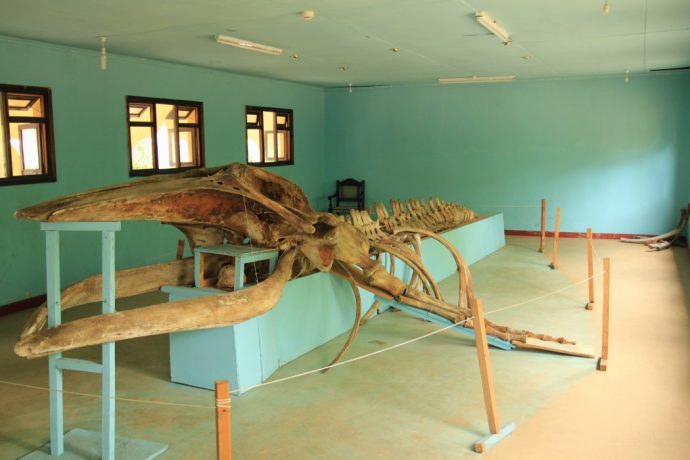
Do you need a guide at Gede?
We don’t normally hire guides, preferring to be able to walk around at our own pace without feeling pressured or hassled. Yet visiting somewhere as remote and unknown as Gede, we decided a guide would be invaluable in terms of learning about the history of the place, and we were so glad we did. There are a few information signs at Gede dotted around the ruins, but we discovered so much more from our guide Harry, who explained the stories behind the town, and why some of the rooms were named after household objects.
The guide isn’t included in the entrance price, and payment is done purely on a tipping basis. Despite Harry telling us this several times, we liked his enthusiasm and excellent knowledge of the history of Gede. He was clearly happy to be guiding visitors who were actually interested in the ruins, rather than just wanting to take monkey selfies.
How long to spend at the site
Gede is open daily from 07:00 to 18:00.
If you hire a guide and are really interested in learning about the history of Gede, you could easily spend a couple of hours here. Without a guide, reckon on spending maybe an hour wandering around. Don’t forget to take water with you, it gets really hot here, despite the relative shade from the forest, and there’s nowhere to buy refreshments. To escape the worst of the heat, go earlier in the morning, or later in the afternoon.
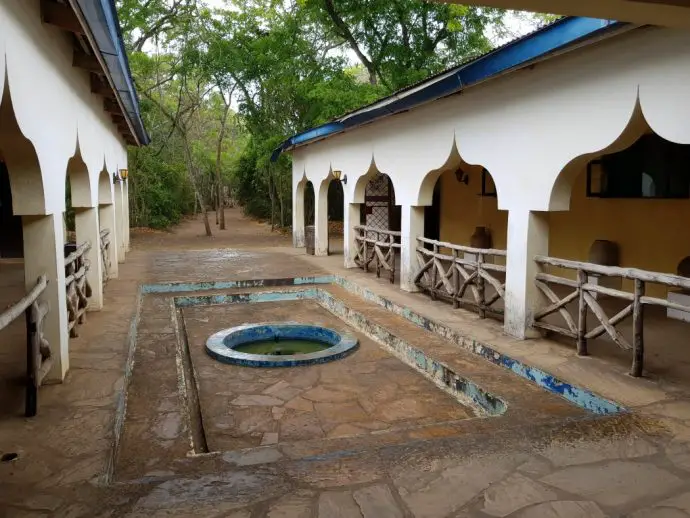
How to get to Gede Ruins
If you’re visiting this area the chances are you’ll be staying at one of the beachfront hotels in Watamu, in which case it’s just a 10 minute drive to Gede. We hired a car and driver from our hotel, but if you’re on a budget you can flag down a tuk tuk which will take you there for a fraction of the cost.
Cost of Entrance
Entrance to Gede costs KS500 per person, and you can buy tickets at the front gate. This money apparently goes to the community to help with education and to try to slow the pregnancy rate amongst young women before they have a chance to enjoy education or find work. There’s also Butterfly House here at Gede too, although we didn’t visit.
For more on Gede visit National Museums of Kenya.

